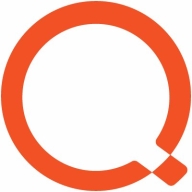

Quest KACE Systems Management Appliance and Microsoft Windows Server Update Services compete in the systems management category. KACE SMA holds the upper hand with its broader features, making it more suitable for large organizations, while WSUS is focused on centralized update management for Windows environments.
Features: KACE SMA offers mass package deployment, asset management, and help desk capabilities, making it effective for large organizations and providing a unified management interface. WSUS is integral for centralized update management within Windows environments, focusing on update deployment and being cost-effective as it's part of Windows Server.
Room for Improvement: KACE SMA faces challenges in scalability, image deployment, and custom reporting, with users seeking better consistency in updates and simpler management of advanced functionalities. WSUS can improve its reporting features, update accuracy, and user interface, with users desiring better integration and more intuitive policy management.
Ease of Deployment and Customer Service: Both products support on-premises deployment and are moving towards hybrid and cloud environments. KACE users appreciate personalized support and responsive service, whereas WSUS benefits from its integration with Windows environments, though lacking the service depth and innovation KACE offers.
Pricing and ROI: KACE SMA is a premium option with cost-effective annual licensing based on endpoints, offering significant ROI through time savings and efficiency, requiring upfront investment. In comparison, WSUS has the economic advantage of being included with Windows Server licenses, appealing to smaller organizations with budget constraints.
The return on investment is seen in the quick access to information, good inventory management, and efficient systems management.
When you pay for the support, you are guaranteed resolution, and I don't think anybody else does that.
Premium support does not have any benefits.
There was a time when contacting the support agency was more straightforward.
I would rate the customer support for Quest KACE Systems Management Appliance (SMA) as a 10.
The customer service is very good, providing quick customer support in Spanish.
To go beyond this, shifting to SCCM is advisable.
We have outgrown the size of one KACE appliance and are now running two.
The product is very scalable as it supports 10,000 thousand endpoints with just one appliance.
The inventory tool and the entire backend of Microsoft Windows Server Update Services is poorly coded. It's not very reliable, so you can tell when dealing with bad code, and it may work one day but may not work another.
Currently, we have to go into each org to deploy applications when we need them all across the university.
The user interface needs improvement as customers have mentioned they do not like the interface since it is not an SMA-based interface.
It's a free service.
It's free.
The pricing is in the middle range of the market, not too expensive but not the cheapest either.
My experience with pricing, setup cost, and licensing for Quest KACE Systems Management Appliance (SMA) is that, hands down, it beat all of the others in simplicity and pricing.
The ease of use and efficient reporting contribute significantly to my overall productivity.
Patch management is indeed valuable, however, the process to achieve it could be improved.
Scripting has saved us hundreds of hours over the years when patching these vulnerabilities compared to how we did it before.
The most valuable features include simplicity, which makes systems management easier and faster, especially for device management.


Microsoft Windows Server Update Services (WSUS) is a patch management tool that simplifies the administrator’s task of deploying the latest Microsoft updates. Administrators use WSUS to manage the distribution of updates released through Microsoft Update to computers in their network.
WSUS has features you can use to manage and distribute updates from a management console. The WSUS server can also be a source of updates to other servers within the organization, acting as an upstream server.
Microsoft Windows Server Update Services Use Cases
The four main use cases that WSUS adds value to businesses are:
Microsoft Windows Server Update Services Features
This built-in server includes the following features:
Requirements
In order to be able to use WSUS to manage and deploy updates, it is important to use a supported WSUS version, such as:
Microsoft Windows Server Update Services Benefits
Different Types of WSUS Deployments
Quest KACE Systems Management Appliance is a comprehensive tool for managing IT endpoints. It facilitates asset management, software distribution, and endpoint tracking while offering remote access capabilities and a centralized help desk.
Quest KACE Systems Management Appliance is designed for organizations that need efficient endpoint management. It offers a range of features like inventory tracking, automated patch management, and ticketing. By integrating with remote access tools such as Bomgar, Quest KACE helps reduce manual tasks involved in managing software updates and system deployments. Although it faces challenges in scalability and requires improvements in integration and reporting, it remains a versatile choice for asset tracking and endpoint administration.
What are Quest KACE SMA's key features?
What benefits should users consider?
Quest KACE Systems Management Appliance is implemented across industries for managing IT assets and endpoints, particularly where remote management and compliance are critical. It's employed in healthcare, education, and government sectors for efficient patch management, inventory control, and software deployment, aiding organizations in managing security accreditations and centralizing help desk operations.
We monitor all Patch Management reviews to prevent fraudulent reviews and keep review quality high. We do not post reviews by company employees or direct competitors. We validate each review for authenticity via cross-reference with LinkedIn, and personal follow-up with the reviewer when necessary.